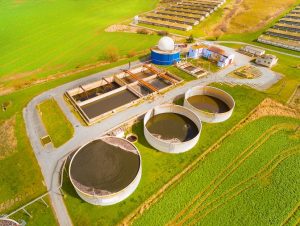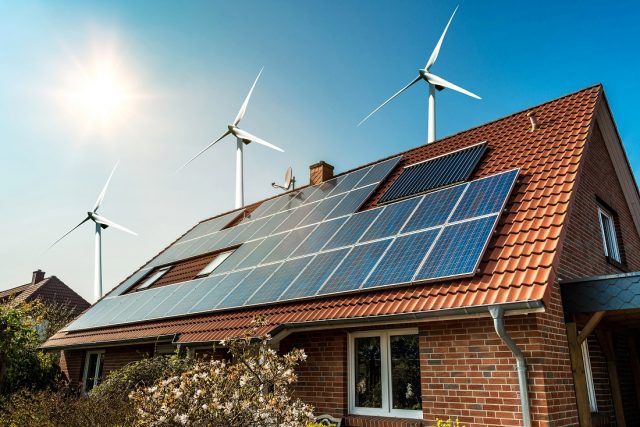“Don’t complain… Find a solution and implement it yourself.” D (Solar) Suresh
This summer, with monsoon having failed us, and an imminent drought situation, it is natural to wonder what the government is doing.
Seeing solid waste piling up all around, it is natural to wonder what the government is up to.
The dreaded power cuts… It is natural to wonder what the government is doing.
There are problems and millions of reasons for not doing something. D Suresh, popularly known as Solar Suresh, firmly believes that you should find the solution and implement it yourself. An IIT-IIM qualified entrepreneur who is a visiting lecturer on management related topics, he has turned his house in Kilpauk into an independent unit, not needing government-supplied services such as electricity, water and even gas. The journey was not easy, but has been very satisfying. In a conversation with S Meera, Solar Suresh shares the milestones in his journey and tips on how others can do it too.
You generate your own power using the solar energy. Can you tell us what triggered the interest and how you went about it?
“I have travelled extensively, especially in Germany, where I saw homes with solar panels. It made me want to try generating my own power too. But finding a vendor for my four-bedroom independent house was not easy. After five years of searching, I located a local vendor in Virugambakkam who agreed to provide me with customized solution.
Initially, I started with 1kw in 2012, and then upgraded it to 3kw capacity four years ago. The unit supplies power to one air conditioner, the pump, refrigerator, lights, fans, TV, computer, laptop, washing machine and mixie.”
What would you say are the benefits of going solar?
“I have not experienced a power cut even for one minute in the last four years, and I save electricity charges by producing around 12 to 16 units a day. Since the power generated also charges solar batteries, I get power even at night and on rainy days.
In addition, tariff increase in electricity does not affect me since raw material is free for around 20 years and the process of generating electricity is also free for 20 years – during the life span of the panels.
In short, I get 6% tax-free return on my investment, including for battery replacement.
Solar energy is a non-polluting power, consumes no fossil fuel and also saves foreign exchange for the country.”
What do you need to tap solar energy?
“A shadow-free area of about 80 sq ft is needed to generate 1kw of power. You can run most of the gadgets, except the water heater and regula r AC. It would cost you somewhere around Rs90,000 to 1,00,000 without battery and Rs1,60,000 to 1,80,000 with battery. In other states, you can also avail the subsidy that the central government provides through the state government. But in Tamil Nadu, the system has not been effective.
r AC. It would cost you somewhere around Rs90,000 to 1,00,000 without battery and Rs1,60,000 to 1,80,000 with battery. In other states, you can also avail the subsidy that the central government provides through the state government. But in Tamil Nadu, the system has not been effective.
Maintenance is also easy – the panels need to be cleaned just like cleaning doors and windows once in a month or two. In tubular batteries, top with distilled water once in two or three months.”
Isn’t there a scheme where excess power can be fed into the grid?
“Yes, and I can claim to have been the trigger. Net metering, as it is called, is a scheme introduced by the government to enable excess electricity produced from solar to be fed into the grid and obtain credit. This is adjusted against the night consumption from the grid. This results in monetary savings for households.
The drawback, though, is – in case of a power cut during the day time, even with solar, there will be a power cut. You cannot have solar batteries as a backup.”
Apart from tapping solar energy, you also use biogas…
“When news about my solar venture spread, one gentleman visited me. It turned out he was into biogas, and my interest was piqued. I decided to try it out, more to manage my kitchen waste than to generate gas. In fact, the distance from the biogas to my kitchen is longer than the prescribed one, but I was happy to experiment.
I have a biogas plant of 1 cu mtr capacity in my backyard. This too needs a shadow-free space, and 4 kg of kitchen vegetable waste per day (it can go up more) to produce about 20 kg of gas per month.
 Since a household of two people does not generate enough to feed this biogas, I scout the neighborhood and vegetable shops to collect food waste and peels to go into the unit, where the bacteria from the cow dung added at the time of installing the unit anaerobically methanizes the waste. It also generates slurry, which I dilute and use for the garden.
Since a household of two people does not generate enough to feed this biogas, I scout the neighborhood and vegetable shops to collect food waste and peels to go into the unit, where the bacteria from the cow dung added at the time of installing the unit anaerobically methanizes the waste. It also generates slurry, which I dilute and use for the garden.
One word of caution – do not add meat, leaves from the garden or citric food.
It can also be used to generate electricity in large complexes and industries.”
How can one go about getting a biogas unit in the city?
“Sintex and similar brands have biogas units to meet different needs. You need a special gas with large burner holes since the pressure is low. Since cooking time maybe longer than in a regular gas stove, boosters can be added to improve pressure. Use of biogas can bring down the use of LPG cylinders dramatically.
It needs 3 to 4 kg waste per day to produce about one cylinder – 14 kg of gas. The waste needs to be cut into pieces, soaked in water and fed into the system.
It is a one-time cost of about Rs40,000 to Rs50,000, but needs no maintenance or operational costs.
This is also useful for hotels and hostels where waste generation is more than 200 kg; a proper system with materials handling can be installed.”
The outer wall of your house has a network of pipes to trap rainwater. Can you share your experience with rainwater harvesting (RWH)?
I started rainwater harvesting 20 years ago, even before the government mandated it. I also drilled holes in places where water stagnates on the ground and fitted in slotted pipes to let it drain to the ground below and recharge the ground water. There is so much water under my house that I had to raise my floor!
Many buildings installed RWH more as an obligation than because they realized its benefits. Even my neighbors need to dig deep to find groundwater whereas I get it at 10 feet. All I do is, before the commencement of the monsoon, I clean the terrace. The water passes through an organic filter with pebbles, charcoal and sand, which clean it and can be reused. Besides this, it needs no extra maintenance.
I also have a terrace garden and have fenced my house with bamboo and creepers to have a forest-like effect. I don’t get to see the road or experience pollution.
If someone wants to adopt any of these conservation methods, can they contact you?
Yes, I have helped quite a few people and charge them on a pro bono basis, requiring only transportation.
Contact D Suresh at 93812 05869. New 17 Vasu Street, Behind EGA Theatre , Kilpauk Chennai 600 010 . Email: sureshd157@gmail.com













































